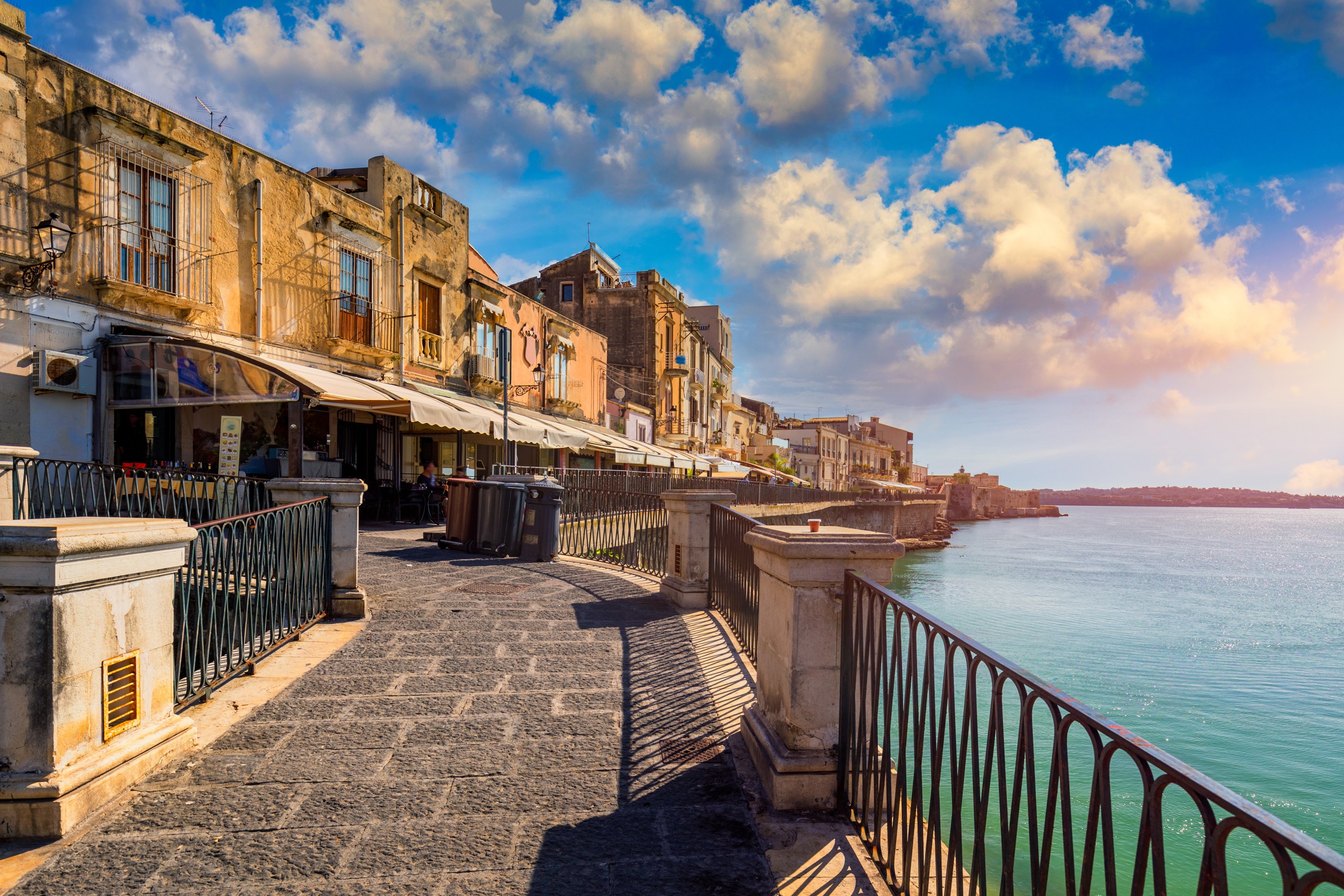
Siracusa. Italy
Siracusa. Italy
Description
Strategically located at the Gulf of Siracusa next to the Ionian Sea on an expansive bay, Siracusa was founded in 734 B.C. Siracusa was once a rival to Athens for power and prestige and home to some of the great thinkers of the time. Nestled amongst fragrant citrus groves along the crystal waters of the Ionian Sea, today Siracusa is a treasure trove of ruins, including temples, amphitheaters and an ancient castle perched on a vast archaeological site on the edge of the modern city. They reveal the three civilizations that occupied the area – Greek, Byzantine and medieval Judaic. The exceptional archaeological site of Neapolis Archaeological Park contains an enormous number of ruins and offers the chance to see one of the largest remaining Greek theaters in the world. A stroll through the older residential quarter on the island of Ortigia is an opportunity to explore this historical center of the city, where you'll discover winding streets, ancient stone buildings and the freshwater Spring of Arethusa, named for a nymph in Greek mythology. Venture out into the countryside for lush vineyards and magnificent rolling scenery, then photograph the height and majesty of Mount Etna, Europe's tallest active volcano.
Points of Interest
- Sicilian countryside
- Noto
- Neapolis Archaeological Park
- Ragusa Ibla
- Mount Etna
- Old Town
More about Siracusa. Italy Points of Interest
-
Sicilian countryside -
The gorgeous Sicilian countryside is known for its remarkable diversity and microclimates that unfurl from rugged mountains to forests with fields of wheat, olive groves and rolling hills studded with villages of stone and stucco.
-
Noto -
Occupied since the 2nd century B.C., Noto, a UNESCO World Heritage Site, lies at the foot of the Hyblaean Mountains. It is noted for its early 18th-century architecture in the Sicilian baroque style and elegant walkways.
-
Neapolis Archaeological Park -
This vast archaeological park contains Siracusa's greatest concentration of ruins and showcases three main areas: the stone quarries, the Greek theater, which is one of the largest in the world, and the Roman amphitheater.
-
Ragusa Ibla -
Ragusa Ibla is a photogenic marvel of an ancient city, rebuilt with exquisite baroque buildings following a devastating 1693 earthquake and located on a wide limestone hill surrounded by green valleys and cleaved by a deep ravine.
-
Mount Etna -
The tallest European volcano, Mount Etna is also one of the most active volcanoes in the world. The fertile lands at its base make for a rich agricultural area of vineyards and orchards that carpet the surrounding plains.
-
Old Town -
The old town area boasts Greek and Roman remains, medieval Norman buildings and remarkable baroque architecture. The Piazza del Duomo is home to a wonderful cathedral that is built on the site of an ancient temple of Athena.